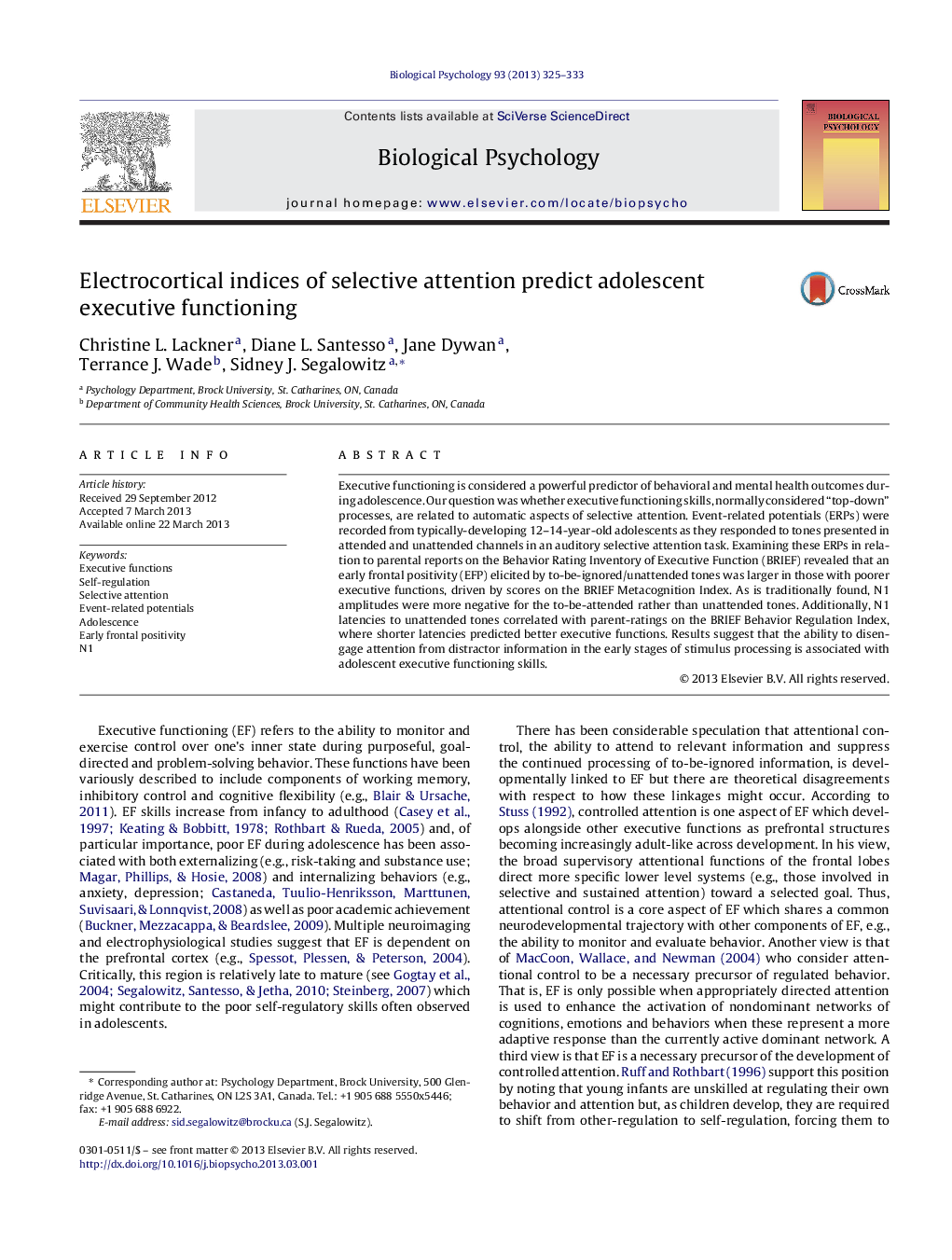| کد مقاله | کد نشریه | سال انتشار | مقاله انگلیسی | نسخه تمام متن |
|---|---|---|---|---|
| 920971 | 920741 | 2013 | 9 صفحه PDF | دانلود رایگان |

• ERPs in an auditory selective attention paradigm predicted real-world executive function in 12–14-year-old adolescents.
• The prediction involved a to-be-ignored stimulus, not the attended stimulus.
• An early frontal positivity and the N1 predicted planning/organization and inhibitory control, respectively.
Executive functioning is considered a powerful predictor of behavioral and mental health outcomes during adolescence. Our question was whether executive functioning skills, normally considered “top-down” processes, are related to automatic aspects of selective attention. Event-related potentials (ERPs) were recorded from typically-developing 12–14-year-old adolescents as they responded to tones presented in attended and unattended channels in an auditory selective attention task. Examining these ERPs in relation to parental reports on the Behavior Rating Inventory of Executive Function (BRIEF) revealed that an early frontal positivity (EFP) elicited by to-be-ignored/unattended tones was larger in those with poorer executive functions, driven by scores on the BRIEF Metacognition Index. As is traditionally found, N1 amplitudes were more negative for the to-be-attended rather than unattended tones. Additionally, N1 latencies to unattended tones correlated with parent-ratings on the BRIEF Behavior Regulation Index, where shorter latencies predicted better executive functions. Results suggest that the ability to disengage attention from distractor information in the early stages of stimulus processing is associated with adolescent executive functioning skills.
Journal: Biological Psychology - Volume 93, Issue 2, May 2013, Pages 325–333